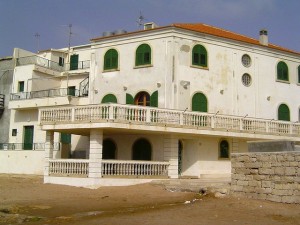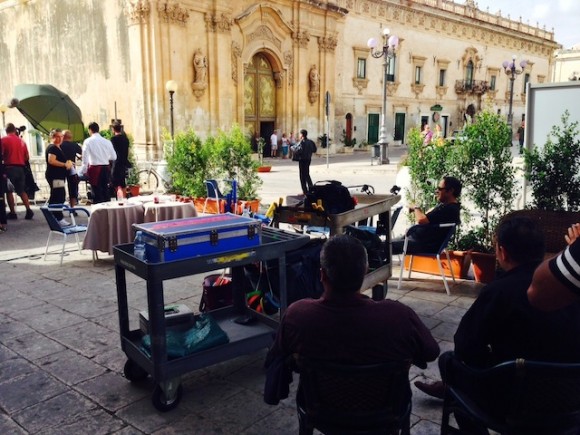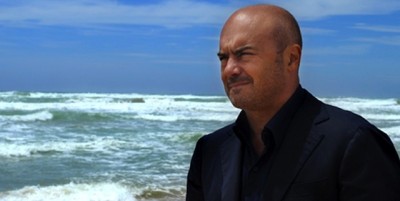In today’s Sicily the Mafia might seem like ancient history but I discovered that it is alive and well in the heartland of the fictional Italian detective series about the life and investigations of Inspector Salvo Montalbano.
First of all, a confession. I am a Montalbano fanatic. So how could I resist the opportunity to see the police station where the inspector has his office, or the beach house where he lives and shares occasional romantic interludes with his long distance lover Livia, or the palace of the Mafia Don?
The first stop on my Montalbano tour was Scicli, a tiny baroque “paese” nestling between a rocky outcrop and the sea. I wanted to see the Comune building, which in the detective series is Vigata police station.
Imagine my surprise when I stumbled upon the actual filming of a scene in the piazza of Vigata – sorry Scicli. I even saw the younger version of the inspector in the new flashback series entitled Young Montalbano. I pinched myself. I could not believe my luck.
Commissario Montalbano, based on the best-selling detective novels by Sicilian writer Andrea Camilleri, is much loved in Italy and has received international acclaim. It had screened on SBS for several years before I discovered it. Purchased by the BBC in 2013, it is well known across Europe.
Luca Zingaretti in the role of Inspector Salvatore (Salvo) Montalbano has become an international star. The self effacing police inspector is bald, wears well cut jackets and black t-shirts. elegant suits and rarely carries a gun. He lives on strong black espressos and has a fridge full of seafood delicacies, prepared by Adelina, the mother of one of the petty criminals he has locked up.
When he comes up against a brick wall in his investigations he strips off and swims a few hundred metres in the Mediterranean at the front door of his Mirabella beach house; in real life a bed and breakfast at Punta Secca.

Montalbano’s house in the fictional Marinella; actually in Punta Secca, a district of Santa Croce Camerina
It was there that I heard the broad unmistakable vowels of fellow Australian fans. “Look this is where he drinks his coffee!” The voices belonged to Aussie-born second generation Italians from Melbourne, who also declared themselves Montalbano fanatics.
My fellow travellers invited me to join them at our detective’s favourite restaurant for a leisurely “pranzo” of spaghetti with sea urchin sauce, and the best plate of delicate seafood antipasto I have eaten in my entire life.
Salvo’s gastronomical passions are well known. When Livia tells him to fire Adelina before she feeds him a dish laced with poison, he asks: “who will cook for me then?”
Livia is no cook. Salvo lives in dread of her healthy but boring meals. But Livia is in his dreams, and the reader of his novels can only marvel at the lengths the tough cop will go to avoid upsetting her. Other female figures come and go, but it is Livia he truly loves. Sensing that Livia does not trust her, Adelina vanishes as soon as Livia walks through the front door and reappears magically as she departs.
Our next stop was the 120 room Donnafugata Castle, where the 1950s film The Leopard was shot. These days thousands of Montalbano fans want to see the glamorous apartments where Montalbano meets with the Mafia Don.
Inevitably, for this is Sicily, it is impossible to escape the shadow of the mafia. Just when I thought it was safe to forget about the scourge that has long haunted this jewel of the Mediterranean, the carabinieri arrested six Scicli council officers suspected of colluding with the mafia.
The mayoral office of Scicli is the very same office where Montalbano faces his unctuous “questore”, who warns him to be careful of those in authority. The word mafia is barely mentioned in the detective series, but it is omnipresent.
The detective drama is full of corrupt politicians, incompetent professionals and unfaithful women. It is set against baroque architecture and packed with colourful characters such as Catarella, who is so tongue-tied with emotion when he has to convey a message to his inspector that he can barely speak. Catarella is as funny as Miguel, the spanish waiter in Faulty Towers or Kramer in the New York comedy series starring Gerry Seinfeld.
Like Agatha Christie the investigator is unconventional, warm-hearted and essentially good. He knows how to distinguish truth from invention or as we like to say in Australia, he doesn’t beat about the bush.
Camilleri’s detective is a man of few words. “The commissioner was from Catania and his name was Salvo Montalbano, and when he wanted to understand something, he understood it.”
The television success of Montalbano has attracted a new wave of tourists to Sicily and more particularly to the south-east, where Camilleri was born. The series has been filmed in Ragusa, Scicli and Punta Secca since 1999, but recently RAI TV, the producers of the series, have threatened to move production to Puglia on the mainland, after complaining of a lack of financial support from the Sicilian government.
The threat to leave Sicily has put the frighteners on the regional government that has benefitted from a tourist boom in the south-east of the island where the series is filmed. As a result the Sicilian government has announced that Montalbano will be listed as a cultural treasure and will receive the same financial assistance as other works of art.
Do not be afraid to visit. Sicily is not the mafia, and two decades have passed since anti-mafia judge Giovanni Falcone was blown up. Powerful bosses like Toto Riina are festering in jail, but their legacy lingers on as a humble detective series sets the scene for real life events.






